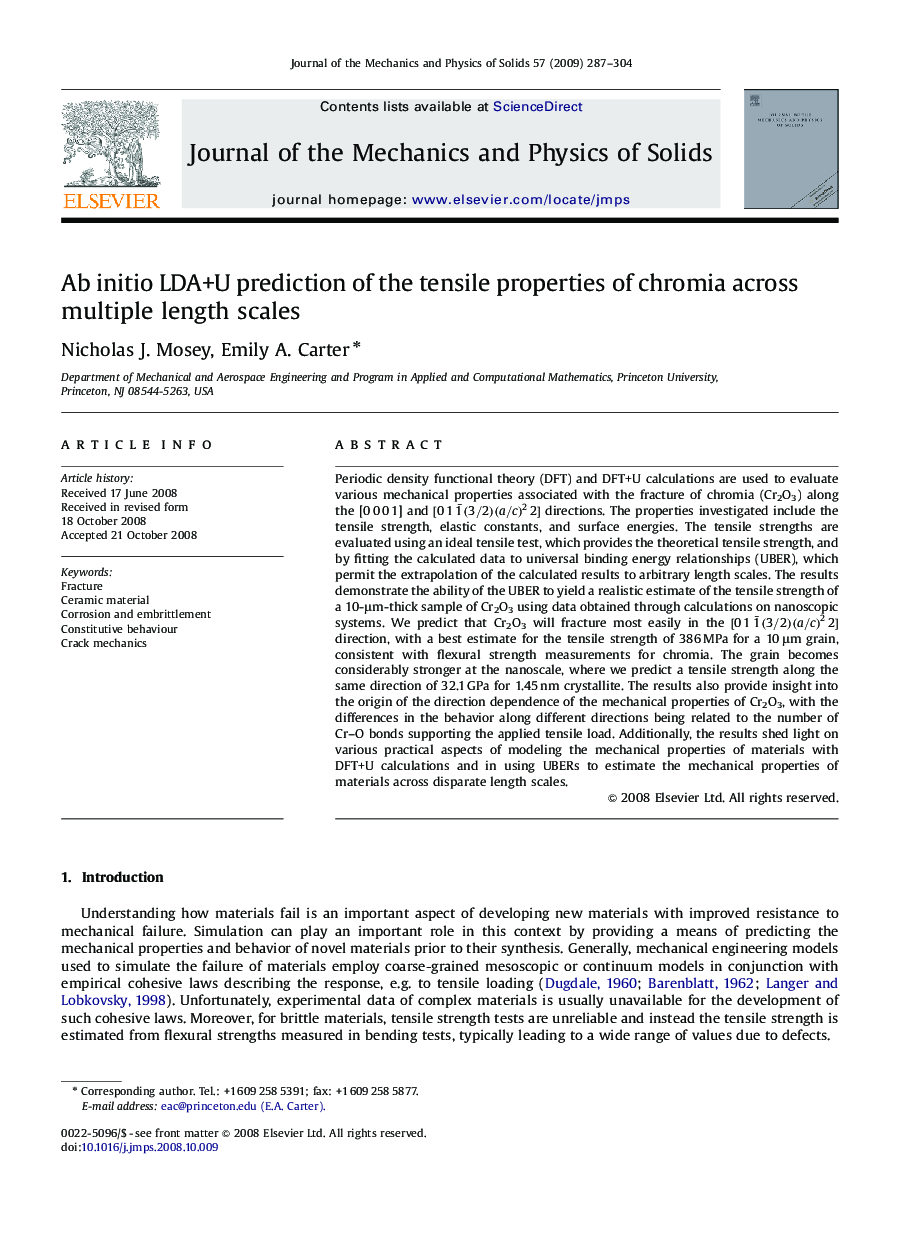| Article ID | Journal | Published Year | Pages | File Type |
|---|---|---|---|---|
| 799922 | Journal of the Mechanics and Physics of Solids | 2009 | 18 Pages |
Periodic density functional theory (DFT) and DFT+U calculations are used to evaluate various mechanical properties associated with the fracture of chromia (Cr2O3) along the [0 0 0 1] and [011¯(3/2)(a/c)22] directions. The properties investigated include the tensile strength, elastic constants, and surface energies. The tensile strengths are evaluated using an ideal tensile test, which provides the theoretical tensile strength, and by fitting the calculated data to universal binding energy relationships (UBER), which permit the extrapolation of the calculated results to arbitrary length scales. The results demonstrate the ability of the UBER to yield a realistic estimate of the tensile strength of a 10-μm-thick sample of Cr2O3 using data obtained through calculations on nanoscopic systems. We predict that Cr2O3 will fracture most easily in the [011¯(3/2)(a/c)22] direction, with a best estimate for the tensile strength of 386 MPa for a 10 μm grain, consistent with flexural strength measurements for chromia. The grain becomes considerably stronger at the nanoscale, where we predict a tensile strength along the same direction of 32.1 GPa for 1.45 nm crystallite. The results also provide insight into the origin of the direction dependence of the mechanical properties of Cr2O3, with the differences in the behavior along different directions being related to the number of Cr–O bonds supporting the applied tensile load. Additionally, the results shed light on various practical aspects of modeling the mechanical properties of materials with DFT+U calculations and in using UBERs to estimate the mechanical properties of materials across disparate length scales.
